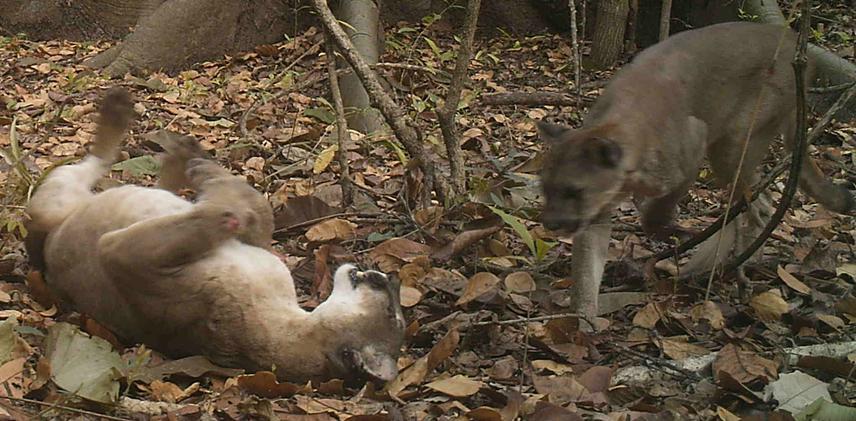Cindy Hurtado
Other projects
25 Jul 2012
Medium and Large Mammal’s Abundance in the Cerros de Amotape National Park, Tumbes - Peru
The Tumbesian Dry Forest (TDF) of northern Peru and southern Ecuador is a hotspot for vertebrate diversity and a priority conservation area. These areas, with 10% of its original forest cover remaining, are now highly fragmented for urban and rural expansion, agriculture, and cattle ranching. In our previous project, we discovered that two species of mammals, the jaguar and Andean bear, were locally extinct from the Amotape-Manglares Biosphere Reserve, the largest protected area within this ecosystem. In this project, we will investigate the persistence of these and other carnivore species across remaining forest fragments and protected areas to propose wildlife connectivity corridors and conservation measures.

To aid in global conservation planning, Mittermeier et al. (2004) proposed 34 biodiversity hotspots as priority conservation areas. The Tumbesian Dry Forest is the southern portion of the Tumbes-Choco-Magdalena hotspot, one of the five hotspots that are located in South America. It encompasses the dry forests in the Pacific region of northern South America (Ecuador and Peru), and has a high concentration of endemic species threatened by rapid habitat loss (Mittermeier et al. 2004, Myers et al. 2000, Dodson and Gentry 1991).
In the Tumbesian Dry Forests (TDF) of Ecuador, deforestation started in the 1950’s and continues today (Tapia-Armijos et al. 2015, Pacheco et al. 2017). The principal causes of deforestation were initially road construction in the 1950’s, and continued crop cultivation and urban development, fires, and cattle ranching (Dodson and Gentry 1991, Tapia-Armijos et al. 2015).
Currently, protected areas in the TDF are surrounded by crop fields, farms, towns, and small cities in development. Forest conversion is directly affecting wildlife, by increasing conflict with humans, reducing forest connectivity, and endangering species with low dispersal abilities and sensitive to human perturbations.
Thus, in this project we will survey medium to large-sized carnivores across a large area of the TDF (700 km in length), covering protected areas and under-sampled forest fragments that are potentially isolated. We considered that a regional assessment is needed because of the large spatial requirements of carnivores. We will identify areas where medium and large-sized carnivores are persisting, and we will associate which variables are related to their persistence and decline. We will also identify which of the 12 carnivore species, historically distributed in the area (Panthera onca, Puma concolor, P. jagouaroundi, Leopardus pardalis, L. wiedii, L. colocola, Lycalopex sechurae, Tremarctos ornatus, Eira barbara, Procyon cancrivorus, Nasua nasua, Conepatus semistriatus), are more susceptible to habitat fragmentation and human pressures.
Additionally, we will be able to identify the factors that promote the decline in carnivore populations and propose ways to mitigate their effects. Finally, we will also identify priority areas with high carnivore richness, abundance, and in need of protection. Identifying carnivore hotspots within this ecosystem will be the first step towards the proposal of wildlife corridors to enhance connectivity and aid in carnivore conservation.